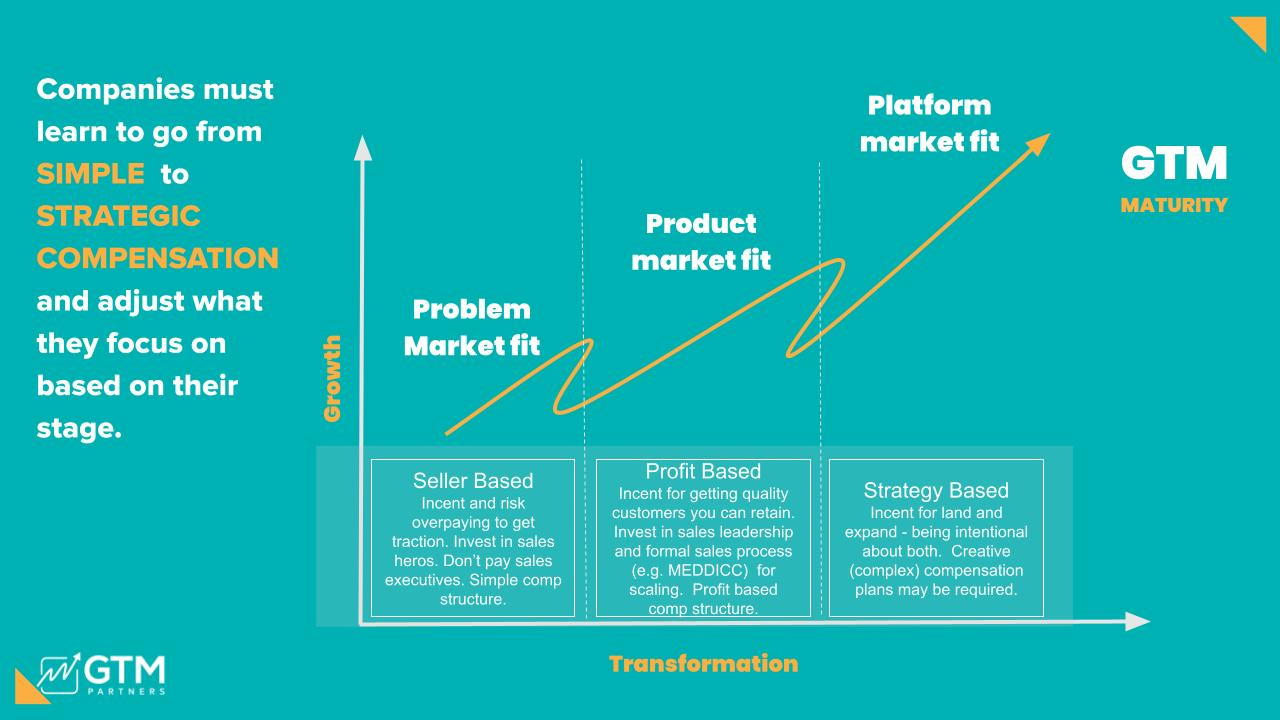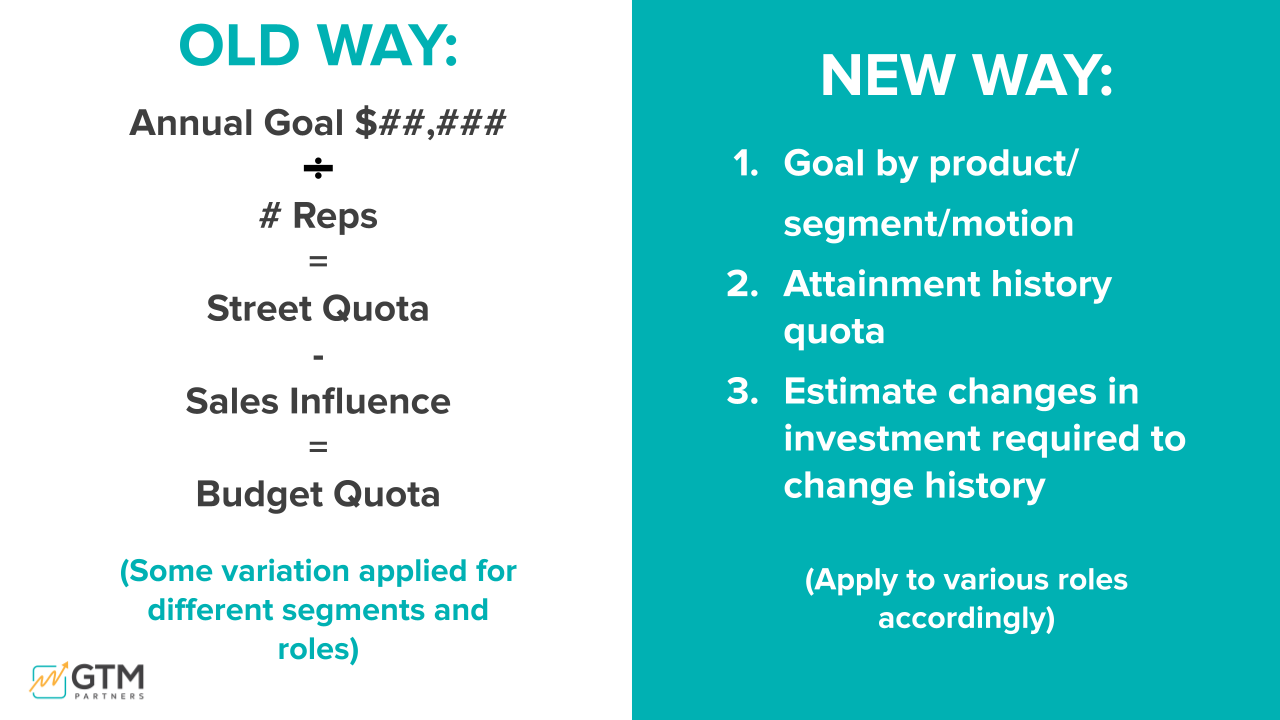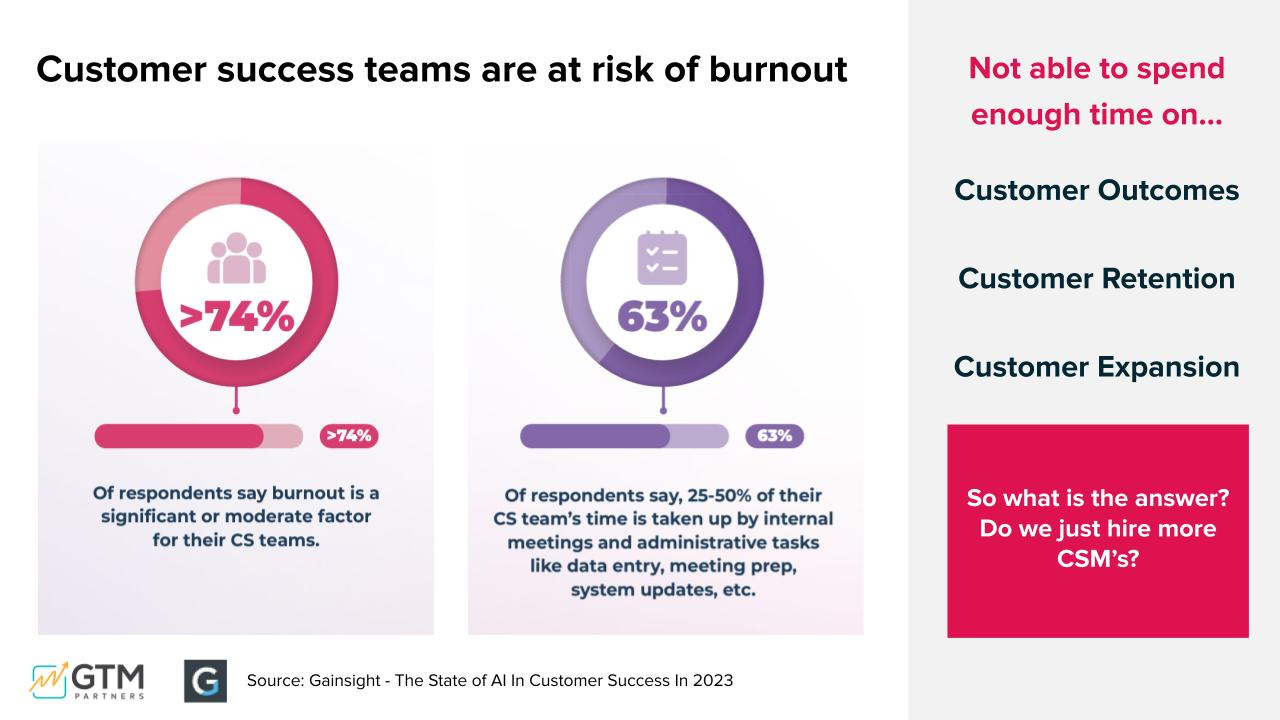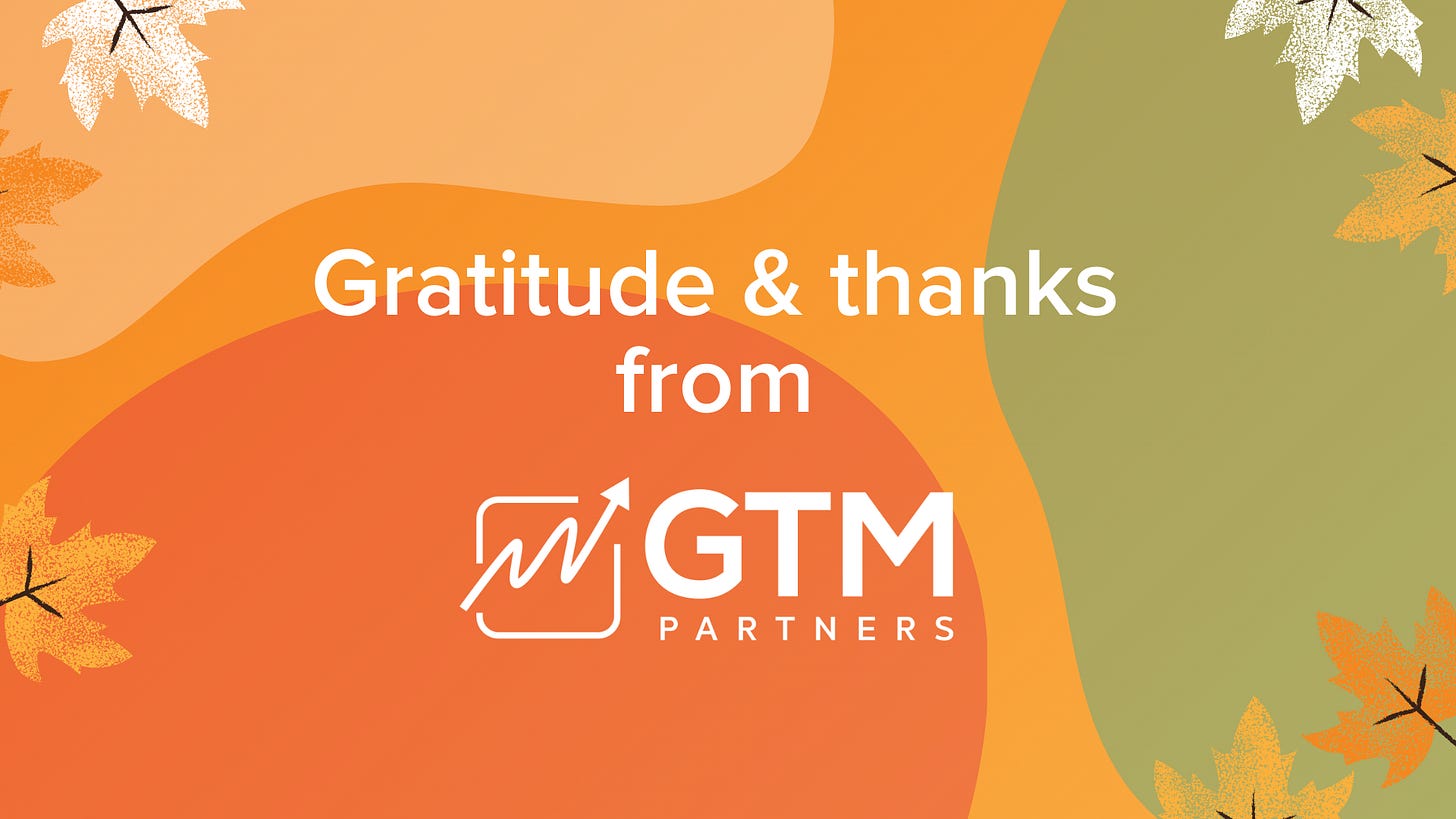Filters
How to Fix Sales in 2024
We hosted an incredible leadership summit last week with more than a dozen sales leaders and experts talking about . . .
HOW TO FIX SALES.
It’s clear that the old sales playbooks don’t work. According to Sales Hacker, only 46.7% of sales reps globally meet quota. Our own research shows 81% of companies say sales velocity has slowed this year.
So what do we do about it?
Jacco: “the penalty for failure is higher and the chance of success is smaller.”
In our opening fireside chat, Sangram chatted with Jacco Van Der Kooij, founder of Winning by Design about what we’re getting wrong when we think about sales today, why the old playbooks don’t work, and how to optimize your recurring revenue in 2024.
Key takeaways:
GTM needs quality management. Software has Agile, manufacturing has Six Sigma, design has design thinking. All important processes have some form of quality management system. Over the next 10 years, we need to develop one for Go-to-Market. We're no longer living in a world of “grow at any and all costs;” we’re living in a “grow at the lowest cost” world, which usually leads to reductions in quality.
Stop doing more and start doing better. We’re using AI to do MORE, but we need to be using it to do better.
The skills good salespeople need are evolving. The role of a salesperson is to manage a relationship where people no longer trust anything coming from email, text messaging, marketing, social media, and websites. This might involve training sales on the art of the three-day sales trip.
Comp plans do not drive performance. Comp plans may drive short-term retention, provide a sense of personal accomplishment, but we need to revisit the way that we motivate sales people to meet quotas.
Lindsay: “Fix your sales compensation!”
Next up, Lindsay Cordell debuting new research on sales compensation modeling.
We will be releasing a full report on this in the future, but for now, a few highlights.
1. Sales structure and compensation should change as you scale.
Companies in problem-market fit rely primarily on the founder and talented sellers. Bring on less expensive reps to run sales motions at the direction of the founder. Ability to expand is a key indicator of ability to transition to product market fit. COMPENSATION should be seller based. Worry less about overpaying on commission here; worry about getting traction. Invest in sales heros. Don’t pay sales executives. Use a simple and straightforward compensation structure.
Companies in product-market fit should bring on talented sales leaders (trained by the founder) to head up a team of motivated sellers. Segment teams by sales capabilities (e.g. SMB, SDR, MM, Ent) and hire intentionally. COMPENSATION at this stage should be based on profit. Incent sales people for getting best-fit customers you can actually retain and upsell. Invest in sales leadership and formal sales process (e.g. MEDDICC) for scaling.
Companies in platform-market fit will need scalable, repeatable sales motions and plays. Hire in numbers. Build formal sales training and tracking programs. Seek out a variety of sales skill sets to develop a well-rounded commercial team. COMPENSATION at this stage should be deeply rooted in company strategy.
Incent for land and expand motions, being intentional and strategic about both. Creative (complex) compensation plans may be required.
2. What looks like a sales or a sales comp problem may be much broader.
Who do we blame when there is uneven quota attainment? Sellers and sales leaders. Why do some sellers do so well, while others, despite work and effort, can’t match or even come close to the top performers? Is there something wrong with the coaching, Sales Bootcamp, the sales process, seller knowledge, seller comp?
Problems are often much deeper.
The fact that your sellers struggle to sell the value could have as much to do with the market approach, ICP, value positioning, and a company’s POV as it has to do with the sellers failing. Your rockstar reps have the experience and network that allows them to be successful in spite of these challenges.
3. Using averages to drive decision making will mask problems with individual reps. Break apart performance to ensure you aren’t creating risk
Reviewing your quartiles using a distribution graph for comp planning purposes will help you see IC risk and opportunity.
50% of your reps should be above the 70% baseline watermark. A good rule of thumb is that average quota attainment should be in the range of 70-85%, but make sure to allow for buffers for gaps in the team, ramp time, underperforming reps, and GTM team misses (product delays, weak pipeline development, poor referrals, etc.)
Panel: Salespeople will always exist and can be empowered by (but not replaced by) technology.
Our third session was an incredible panel of experts talking about how to structure a modern sales organization for success in 2024:
Sales historian Todd Caponi
Shawn Herring (airSlate)
Tyler Lessard (Vidyard)
Jill Rowley (Nearbound), and
Alina Vandenberghe (Chili Piper)
Key takeaways from this fantastic panel:
1. The death of sales has been greatly exaggerated. (Todd Caponi)
Despite reports every decade that the latest sales method will make sales people obsolete (catalogs, websites, chatbots), the opposite is true. If we truly understand that sales is a service profession, we can be confident that sales people will always exist, and in fact the sales profession continues to expand.
2. Customers think they want information, but they really want connection. (Alina Vandenberghe)
Despite the proliferation of tools and AI, we still need human beings to be trusted advisors and partners across the funnel, not only in sales but in customer success and account management. Our customers and prospects want to be heard and understood. Being able to make someone feel that way is an art that cannot be entirely replaced with technology.
3. Sales people should be clarity creators. (Tyler Lessard)
Creating the personal connection is obviously crucial. But just as important is making sure that the customer has clarity about how your product or service will solve their problem, how it can be implemented, and how it will show ROI. Customers can self serve with a vast array of information, but it’s our job to give them clarity and confidence in their decision.
4. Amidst so much signal and noise, proof and references are invaluable (Jill Rowley)
It’s crucial to go beyond leveraging buyer testimonials and case studies on your website and marketing materials, you need to harness the power of the conversations that are happening in communities. We need to ‘live in market” where our buyers are learning, collaborating, and connecting. Leveraging communities and partners is absolutely critical.
5. Technology helps scale, but shouldn’t replace people. (Shawn Herring)
There is so much fear that technology will replace jobs, but it shouldn’t. Technology should enable, accelerate, and expand success rather than replace humans that are helping you achieve that success. Product-led growth doesn’t replace salespeople; it drives a better pipeline. AI and chatbots and automating document workflows should allow good teams to be more efficient rather than leading to a reduction in force.
Panel: How to fix sales with technology
The last session of our leadership summit was all about technology. While most agree that tech is an enabler and an accelerator rather than a replacement, it is still crucial in a modern sales environment.
We had three short demos from Demandbase, airSlate, and Vidyard with reactions and discussions from panelists:
Catie Ivey, VP Sales, Walnut.io
Adam Jay, co-founder, Revenue Reimagined
Ed King, CEO of Openprise
Matt Millen, Co Founder and President, Regie.AI
George Alifragis, SVP, Metroplitain Partners Group
The themes that emerged:
Focus on rep experience. Tools and technology designed to enable reps’ productivity and efficiency have to be easy for them to use. We need to make sure reps are not bogged down in tech or processes that are supposed to be speeding them up. We need to accommodate different learning styles, scheduling conflicts, and market segments.
Improve the buyer experience. Most successful B2B companies are taking notes from the B2C buying experience. We must key into our individual buyers and serve them the right content at the right time, make it easy for them to get what they want, and create trust and individual connection when they want it.
The days of a bifurcated sales and marketing pipeline are over.
The third wave of technology (including Demandbase, airSlate, and Vidyard) are solving these problems with AI, automation, machine learning, scoring, better experiences, and improving rep learning and access.
Watch 7-minute demos focused on these themes from:
Demandbase (Thomas Keefe)
airSlate (Harry M Rhatigan)
Vidyard (Tyler Lessard)
Also loved this quote from Adam Jay: “Outbound isn’t dead. Bad outbound is dead.”
If you’d like our analysts to come talk to support your Sales Kick Off or assist with 2024 GTM planning, we’d love to help.
Happy December! Looking forward to seeing many of you at our San Francisco road show this Friday (and ping pong the night before!)
Love,
the GTM Partners team




